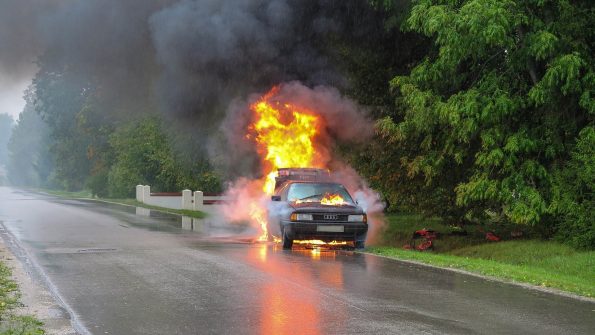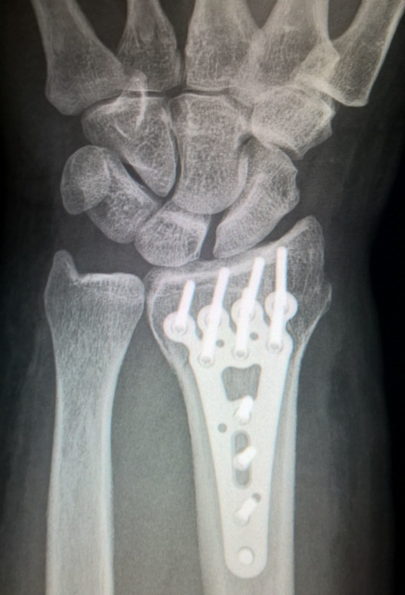Regardless of the number of airbags and the strength of crumple zones in modern vehicles, the human body still suffers a major limitation: it can’t tolerate extreme g-forces or impacts. This leaves it vulnerable to being injured in vehicle crashes with high-speed impacts or where there are particularly violent changes in direction. The amount of protection a vehicle can provide its occupants is also limited when a small vehicle is hit by a large one, such as a small hatchback hitting a road train, and objects can enter into the cabin, or deform the cabin to such an extent that it hits the occupants. There’s also the issue of airbags only firing once; in a multiple-impact crash, the airbags won’t be effective for the second and subsequent impacts.
Injuries sustained in car crashes are much less severe than those suffered by motorcyclists. However, serious injuries can still occur.
Whiplash
When a vehicle is hit from behind, the driver’s head will snap backward. Most new vehicles have anti-whiplash headrests which stop the head from moving back too far. These active headrests reduce the moment force experienced by the passenger’s head and neck by around 45%.
The correct headrest position is so that the top of the headrest lines up with the top of your head. This means that the head is supported as much as possible.
Whiplash symptoms include a stiff neck, headaches, trapped nerves or cramps in the neck, inability to turn the head in the full range of motion (either just to one side or to both sides) and numbness in the neck and upper torso.
Neck and back injuries
As well as whiplash, which tends to be from the rear, in frontal or side-on impacts, the weight of the head can hyperextend the muscles in the neck. In extreme cases this can cause spinal damage and even for blood vessels in the neck that connect to the brain becoming damaged (usually resulting in death).
Strains to the spine can cause herniated disks or damage to the spinal cord. A hyperextended lumbar region can be caused if a person is only using a lap belt rather than a full three-point seatbelt.
Ribcage and sternum injuries
The ribs can be injured if heavy items fly forwards in an impact and damage the rear of the seat. The seatbelt itself can damage ribs in a frontal impact – the narrowness of the belt means a lot of force is taken through the rib cage. This can crack the sternum, something that is particularly painful when healing.
In side impacts, if the door is pushed in, this can impact the ribs, too. Bucket seats or sports seats usually have more lateral protection.
Head, face and brain injuries
The main concern in a high speed impact is the deceleration force on the brain. The brain is not rigid and it is thrown against the inside of the skull which can result in concussion, coma or permanent brain damage.
A brain injury can take months or years to heal and it can affect many parts of a person’s personality, cognitive function and motor skills, such as:
- Impaired speech or vision
- Personality and mood changes
- Difficulty in speaking, writing or reading
- Loss of fine motor coordination
- Nausea
- Migraines
- Inability to concentrate
Injuries to the head can also arise from the head hitting the window or other parts of the car (especially in a multi-impact scenario where the airbag deflates after the first impact). These types of impacts can also injure the face, including from flying glass, but also burns from the airbag.
In the worse case, plastic surgery may be required. Skull fractures and deep cuts are common. Side impact (T-bone) crashes are worse for this.
Eye injuries
In extreme cases, a frontal impact can cause a person’s retinas to detach. While this can be repaired with surgery if it’s not serious, in some cases blindness in one or both eyes can occur. It is still possible to drive with blindness in one eye.
Burns
A small amount of explosives is included in each airbag. The interior of modern vehicles can have as many as 10 airbags. There’s a risk, primarily to your hands, wrists and face, that you will get superficial burns.
It’s rare for a vehicle to catch fire and an occupant be trapped, but it does happen, and this can cause deeper burns that produce permanent scarring.

Wrist, hand and arm injuries
Hands and forearms can be injured by the airbag as it goes off, which is why it’s important to hold the wheel at roughly 9 and 3. Many vehicles have steering wheels with thumb rests to show you where to put your hands. This keeps them out of the way of the airbag as it deploys.
However, if you maintain your grip on the wheel as you hit an object, you risk breaking your wrists or dislocating your thumbs.
In a driver’s side impact, the driver’s door-side arm is at risk of injury.

Damage to internal organs
In an impact, all the internal organs suffer stress as they impact against the rib cage and pelvis, or are restrained by the seatbelts. It’s possible to rupture organs and blood vessels.
If the rib cage is broken, the sharp edge of the bone can cause damage. If an artery or major vein is damage, serious internal bleeding can occur.
A serious impact can dislodge fatty deposits from blood vessels which then travel and become lodged in another place. This has resulted in amputation where it’s not been possible for doctors to find the location of the blockage in time, or stroke if the fatty deposits lodge in the brain.
Internal organs can also be bruised.
Bruising, contusions and cuts
Superficial and deep bruising and cuts can occur from impacts, or items entering into or moving around the cab. Soft tissue is easy to damage.
Cuts may required stitches and leave scars.
Leg and foot injuries
In frontal impacts, the engine can be pushed back into the cabin, restricting the space for the driver’s feet and lower legs, causing crushing injuries. The steering column can damage a driver’s knees in a similar way. Now that many vehicles have drive-by-wire technology, a metal steering column is not so common. Some vehicles also feature knee airbags.
Modern vehicles have anti-submarining seats where the seat structure is angled slightly backwards. This stops a person sliding forwards out of their seatbelt.
Foot and leg injuries can cause issues with mobility.
Psychological consequences
Physical recovery is mostly automatic, although some physiotherapy or other therapies might be required when injuries are more extreme. However, a serious crash could leave a driver with driving phobias for which counselling can help.
